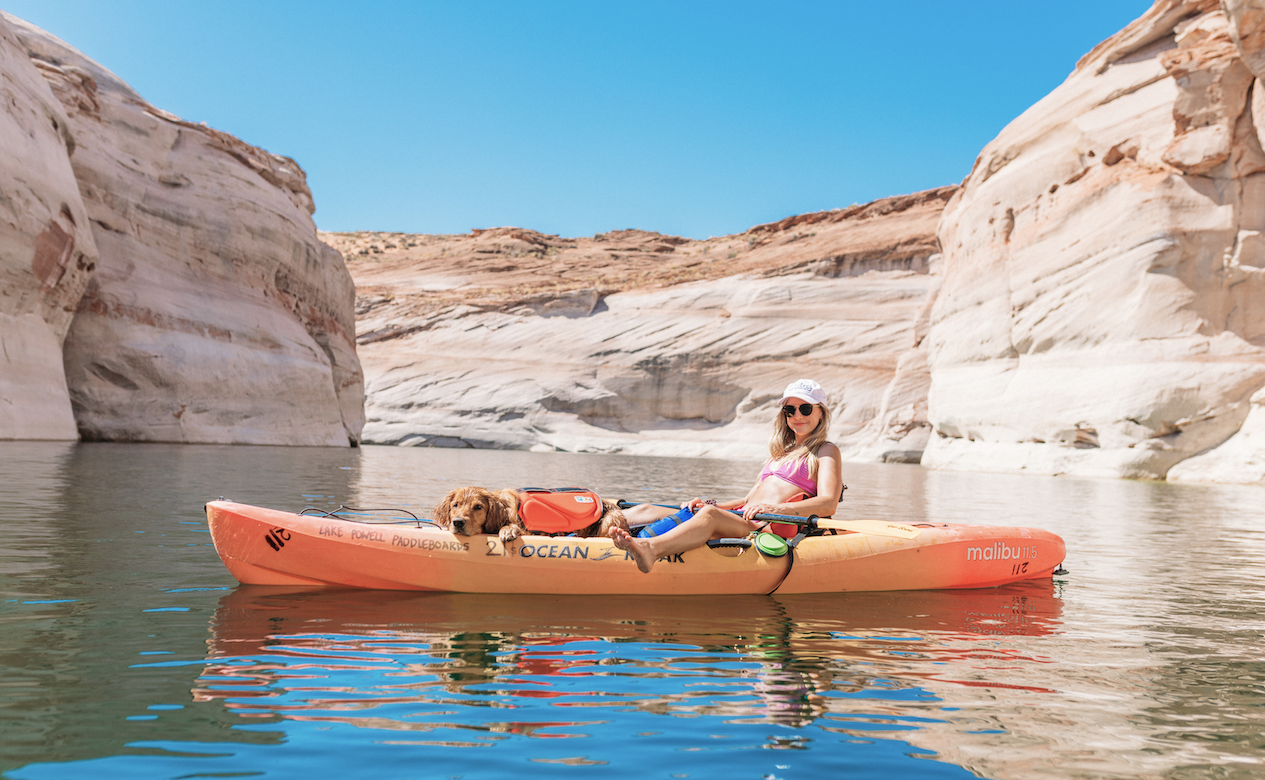Keep Your Pets Cool This Summer

While sweat pours down every inch of our bodies, our pups’ only sweat glands are on their paw pads and nose. They cool down mainly by panting, and in 100-degree weather – that could take a while! It’s up to us to make sure that our furry friends get their exercise in, but don’t get overheated in the process.
DO:
- Provide access to plenty of cool (not iced) drinking water at all times.
- Scout a play place that has plenty of shade and/or water to swim in.
- Exercise your pups during the cooler parts of the day, like early morning or between sunset and dusk.
- Protect paw pads with booties or rubber paw pads from hot pavement and sand. If the ground is too hot for your own feet, it’s too hot for your dog.
- Be conscious of the heat, especially if your dog is overweight, brachycephalic (short nose or flat face dogs), a puppy or a senior dog because they are more prone to overheating.
- Always have an emergency plan. If your pet succumbs to heatstroke, you can save their life by knowing ahead of time where the closest veterinary hospitals are located and the immediate actions you can take to get your pet there safely.
DON’T:
- Ever leave your dog in a hot vehicle! From the American Academy of Pediatrics study, “In terms of heat-rise over time, it makes very little difference whether a car’s windows are closed or partially open. In both cases, a car’s interior temperature can rise approximately 40 degrees within one hour, even when the exterior temperature is only 72°F.”
- Exercise your pets on super hot pavement or sand.
- Ignore the warning signs of heatstroke.
Heatstroke is a life-threatening emergency that can take your pet’s life in a matter of minutes. Signs of overheating and heat stroke include: heavy panting, bright or dark red tongue and bright red or pale gums, staggering or stumbling, weakness or collapse, excessive drooling, increased heartbeat, vomiting, bloody diarrhea and unconsciousness.
If your dog does become overheated you can help cool them down with cloths soaked in cool water and wrapped around their paws, back of neck and underarms. Once they’ve had a chance to cool off, take them to the nearest veterinary hospital immediately. Heatstroke can cause unseen damage to organs and tissues, and should be evaluated by a veterinarian to ensure that your best friend gets a full recovery.
SUMMER GROOMING TIPS: It might seem like common sense to shave your pet in the summer. Before you reach for those clippers, remember that thermoregulation for our pets is different than in humans, and shaving their coat can actually do more harm than good.
- Shaving your dog’s coat can put them at risk of severe sunburn, insect bites, and can increase their chance of injury or skin infections. Talk with your veterinarian or an experienced groomer before deciding whether a summer ‘do is appropriate for your dog.
- Trimming long-haired coats can help to make coat maintenance and hygiene more manageable, especially if your dog’s favorite summer pastime is swimming.
- Brush double-coated breeds gently and frequently to remove dead hair from the undercoat. This will allow air to circulate better near the skin, while allowing the topcoat to continue protecting your dog from the environment.
Be safe, not sorry, and follow the guidelines above to enjoy a healthy and fun-filled summer with your pets!






